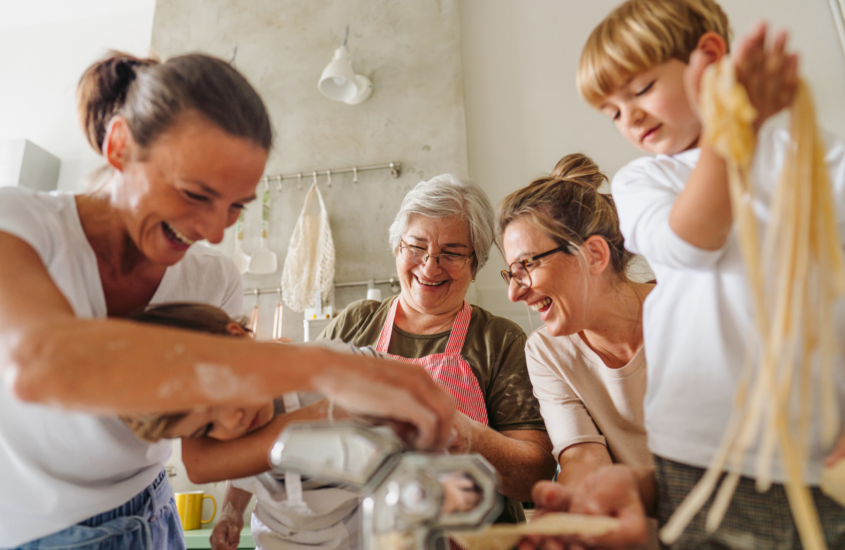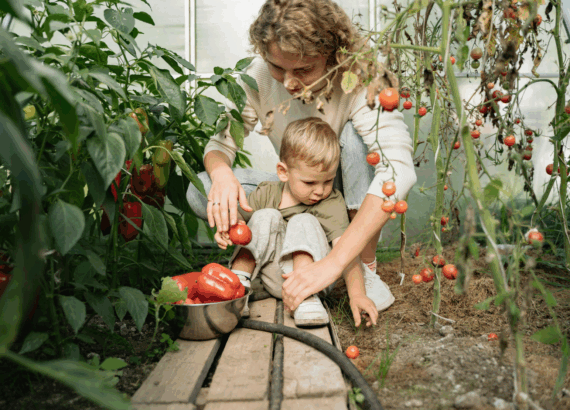The Healthiest Meals Start With Your Ancestors
AmericanMom Team |
Good news! Your heritage is MAHA-approved. How did it make the list? Is there even a list yet? These are fantastic questions. The short answer: no. There isn’t a list of “MAHA-Approved” food (or heritages, for that matter). Actually, it’s funny to think of the trillions of people who ate healthy, real, nutritionally-dense foods way before it was cool. Somewhere in your bloodline is a little old lady who is way more based than you’ll ever be. The healthiest meals start with your ancestors, which is why we want to expand the MAHA idea and dig deep in our individual heritages to see just how impactful real food has been to the history of mankind, not just today’s political culture.
A Recent History of Food
Would it shock you to know the Food Pyramid wasn’t introduced until 1992? Just like income tax (1913) and the Department of Education (1979), this standard of daily life was dreamed up one day and accepted, wholeheartedly, as gospel truth. We trusted the experts. Oops.
According to this pyramid of dietary light and understanding, Americans are directed to eat anywhere between 5 and 11 servings of “bread, cereal, rice and pasta” every single day. This was the USDA telling us to wolf down grains—the same people who approved the use of glyphosate in 1974. If we bust out our tinfoil hats for a moment, we’ll see that these things coincided to create a population which consumes mostly hormone-disrupting poisons and very few nutrients—and have their kids do the same. The original food pyramid was a response to shortages and high prices, and there have been few updates.
In 2011, MyPlate was introduced. It improved the concept slightly, but still prioritized vegetables and grains (the two food groups most likely to be bathed in glyphosate and other chemicals–and deplete the soil) over protein and fruits.
Yes, humans are still trying to figure out the optimal amount of anything considered food, but we can’t deny that filling grocery stores with shipped-in produce grown amongst chemicals and bulk-manufactured items made from nothing but man-made chemicals, carcinogens, and sometimes industrial waste products, has made Americans incredibly unhealthy.

What Food?
For the time being, we’re going to discount all the famines and shortages that are found throughout history. Those times made for unique food responses where grains were, by default, made the primary source of calories to keep people alive.
Instead, let’s focus on heritage food. There’s a new classification going around titled “ingredient families”. These are the families who don’t buy the frozen French fries, they buy the potatoes. They don’t get Jimmy Deans, they buy eggs and bacon and flour. They don’t purchase Cheez-Its, they grab a block of cheese–or maybe even milk to make their own.
It may seem silly (after all, the Cheez-Its are right there—and buy one get one), but those ingredient buyers are carrying on their family’s greatest legacy: real food. Your grandma was probably a margarine girly, but your great-grandma was a butter, steak, eggs, raw milk, make-your-own-bread mama. Great-grandmas ran ingredient families. Mostly because they may not have had a choice, but also because they knew what food actually was. They understood that the fresher the better, and they walked down the street to collect the items their family would consume, fully confident it would mold within a few days.
Your great-grandma probably wasn’t tuned into the science of it all. Instead, she was operating off of pure instinct. Like the animals who avoid the GMO corn and eat the organic, once upon a time, humans also had an instinct of what would truly feed them and what was throw-away junk food. Processed, pre-packaged, TV-dinner-type food did not become popular until the 1950s. It wasn’t necessary to keep things fresh for months or years at a time until your grandparents had already been grown adults for quite a few years.

Heritage Food
Preserving food is not inherently bad. Canning, for example, is the best way to keep food safe and edible for long periods of time. The bigger problem is the chemicals and other stuff that is packed into everything to keep it shelf stable and “fresh” for generations to come. This turns food that should go bad in days into something you can eat a full year later. We’ve seen it with bread, but it’s everywhere.
Heritage food starts with ingredients. Fresh, preferably locally grown, base ingredients. These items are local to your area, making the dishes your ancestors made in their hometown different from those mine made. The Irish didn’t ship avocados in from Mexico any more than Mexicans shipped potatoes in from Ireland. They grew them, or they didn’t eat them. Trade routes, of course, made sharing local items easier, but for the most part, people ate what could be grown where they lived, during the seasons they experienced.
This heritage concept of and connection to food is a major part of the growing movement of healthier homes. American moms are reconnecting to the ingredients and lovingly turning them into nutrient-packed, filling, real meals for their families. This is where heritage cooking and family meals should, ideally, begin and end. We should reject the chemicals, the bright blue snack foods, and the frozen, mass-assembled meals. And we should embrace the foods God gave us in their original form.
It might be time to break out your great-grandma’s recipe books, shop at local farm stores, buy half a cow, and plant a garden. Because your MAHA-approved heritage food is within reach and can only serve to enrich both your body and soul—not to mention establish a deep connection to your loved ones who have gone before you.






